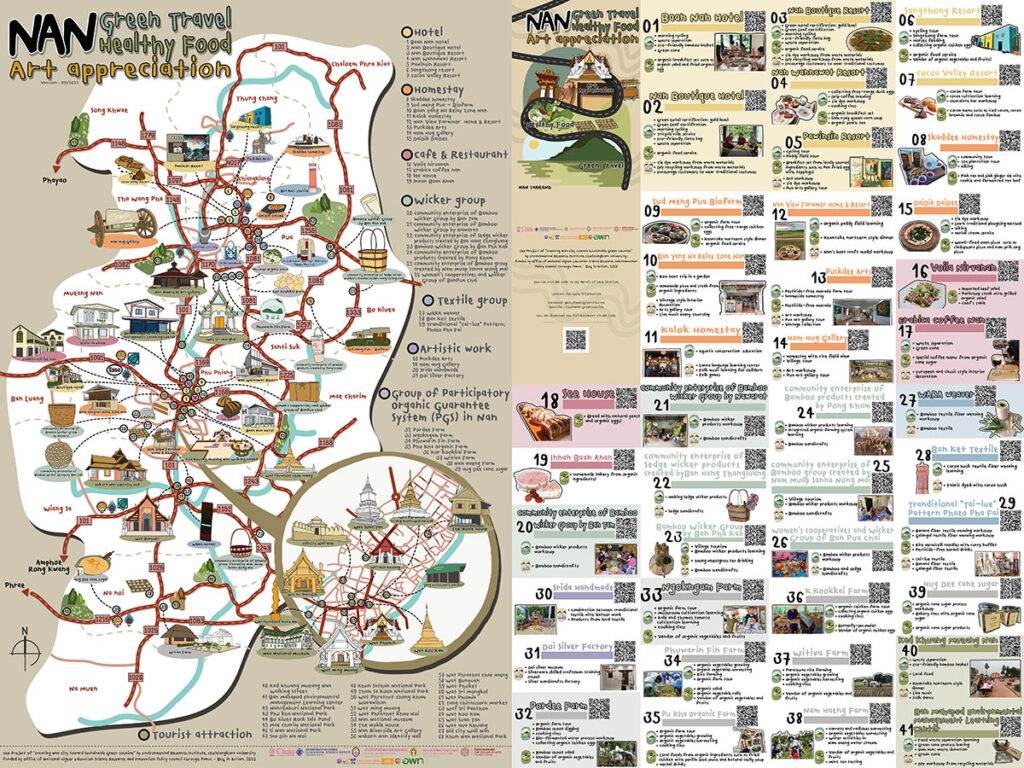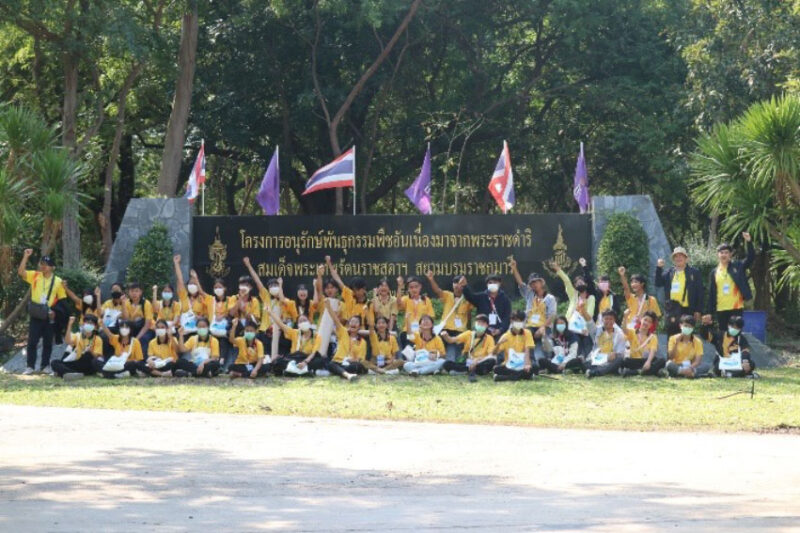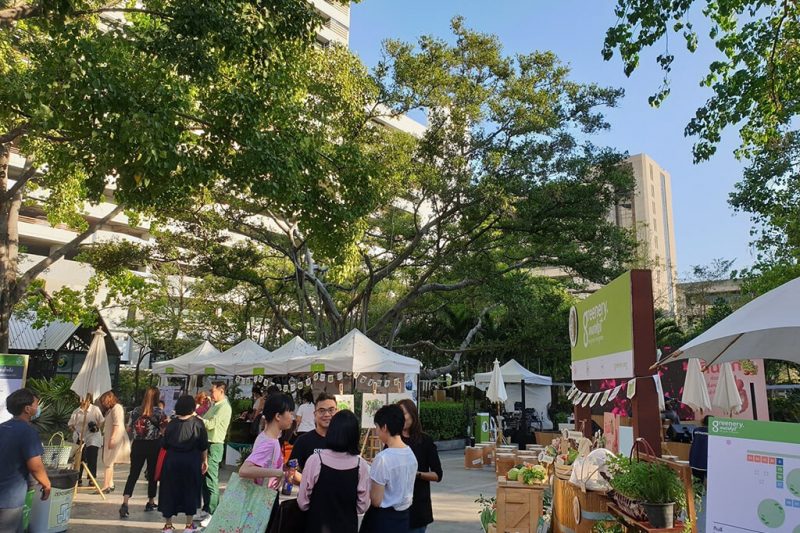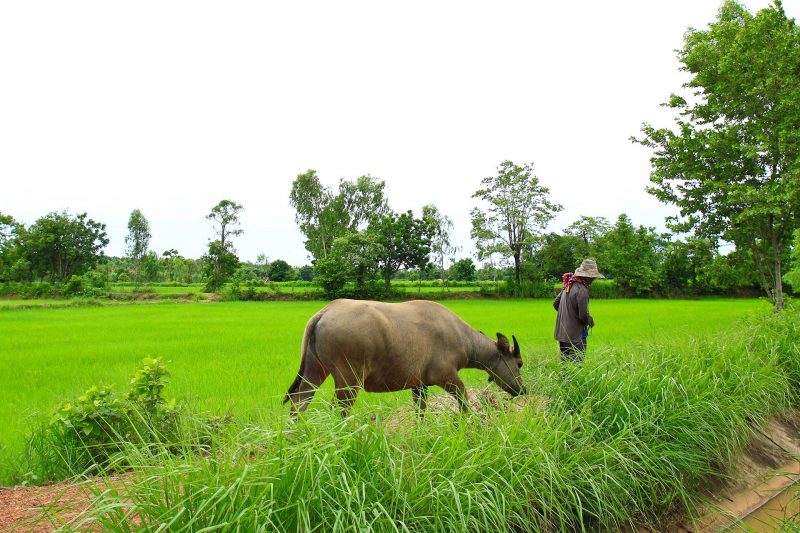“Nan” province aspires to be a “city of happiness, creative economy, perfect nature, abundant agriculture, tight-knit community, and sustainable tourism.”Nan has developed a strategy for balanced and sustainable tourism growth using 5 key strategies.1) Searching, improving, and restoring tourism resources creatively and sustainably; 2) Managing government and local government sections for tourist attraction development; 3) Developing human resource in tourism; 4) Managing tourist attractions in dense tourist areas; 5) Upgrading tourist attractions for universality and sustainability.
The implementation of various strategies to promote and stimulate tourism in Nan province based on art and culture, nature, and showing the uniqueness of the locals resulted in the continuous growth of tourism in Nan and generated 3,000 million THB per year for the tourism industry in Nan.The Center of Tourism Research and Development, Chiang Mai University has also revealed statistics on the number of tourists visiting Nan province, the peak is in November 2020, with more than 100,000 people, which is considered the highest record.
However, in the aspect of creating balance and sustainability while simultaneously stimulating the growth of tourism industry of Nan province, there are still problems and consequences affecting both society and the environment, namely:
1) Urban communities; a large amount of waste was found in landfills in Nan municipality due to the lack of waste minimisation from the source, especially the expansion of the tourism sector, which affects the management of single-use plastic waste, including waste from the household sector.
2) Agricultural communities; found the use of agricultural chemicals in large quantities to produce and export to meet the needs of the industrial sector, yet still cannot sufficiently and safely produce for consumption within the province.
3) Lack of resource utilization and circular production of local products, mainly focusing on imports from outside the province.
4) Lack of connection between the green tourism market and the identity and culture of the province.
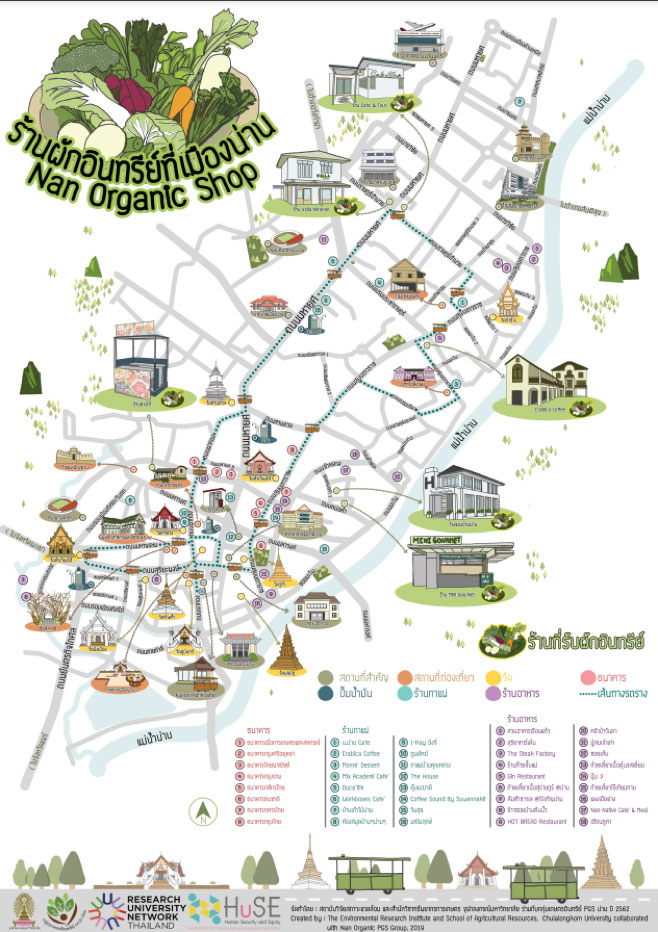
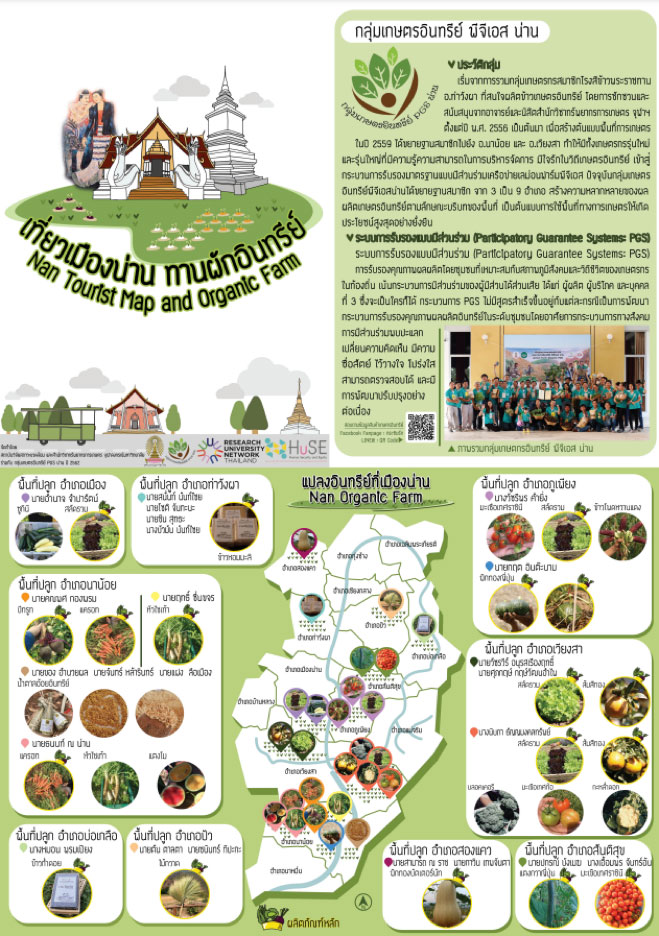
Chulalongkorn University is researching how tourism in Thailand’s Nan province can become carbon-neutral. The Environmental Research Institute, Chulalongkorn University sought to balance and sustain Nan province. They also received research funding from the Program Management Unit for Competitiveness (PMUC) and the Office of National Higher Education Science Research and Innovation Policy Council (NXPO) to initiate the “Travel green, eat clean, and admire arts in Nan” project to enhance Nan Province’s ability to manage green and sustainable tourism with an economic model for sustainable development (BCG Economy), which consists of bio-economy, circular economy, and green finance.
- Green tourism is zero waste tourism. Tourists can choose to buy products made from renewable or reused local materials. The waste produced by tourism activities can also be managed to create value.
- Clean eating is consuming food from local and environmentally friendly sources with a participatory guarantee system (PGS) by converting organic production into green tourism destinations that connect both producers and consumers through tourism routes.
- Admiring art is consuming the valuable identity and culture of Nan province. Local and renewable materials can be reused in a variety of ways to provide tourists with travel experiences that mimic “the way of life of the Nan people.”
The Environmental Research Institute initiated five research projects, namely: 1) Bamboo saves the world: local materials for plastic substitution, 2) Garbage is not disgusting – transform the waste; sustainable waste management in Nan municipality, 3) Innovation in organic waste processing produced by tourism activities for community use, 4) Developing a prototype of agro-ecotourism with participation, 5) Converting cultural capital for creative tourism; transforming bamboo fibre technology into sustainable fashion lifestyle products. Combining all elements to create and develop a Green Tourism Route Map to represent green tourism routes in environmentally friendly tourism areas, driving “Eco Demand and Green Supply” in order to increase balanced and sustainable tourism growth to achieve the goal in accordance with the strategy of Nan province.
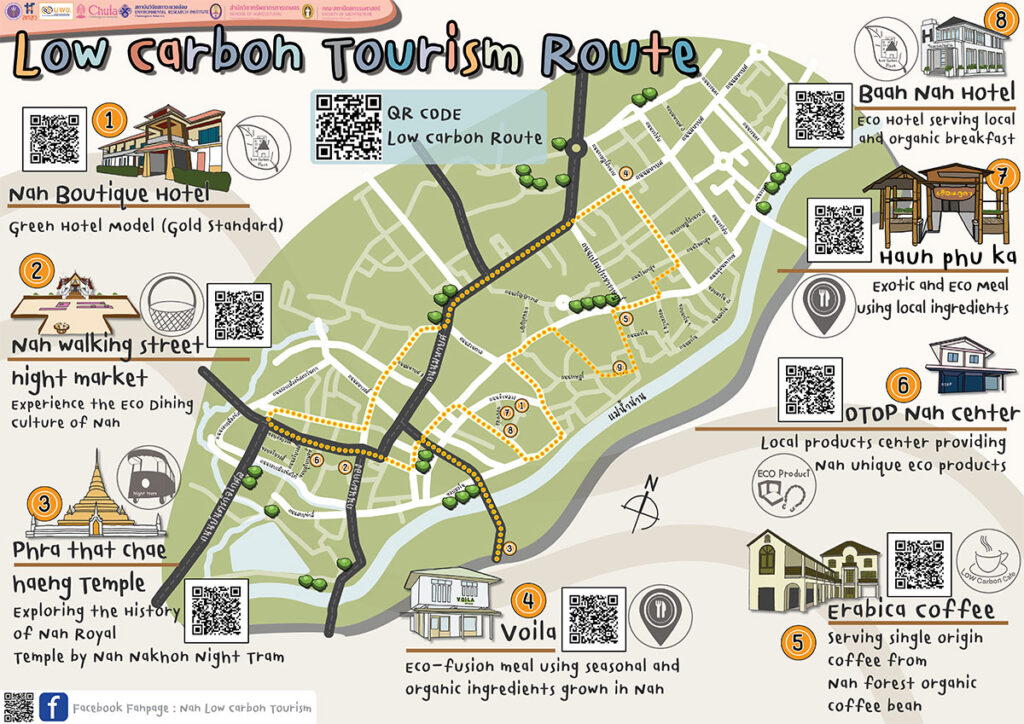
BY
- Environmental Research Institute, Chulalongkorn University
- School of Agricultural Resources, Chulalongkorn University
Related articles:
- https://www.sumernet.org/story/chulalongkorn-university-to-develop-low-carbon-based-tourism-approaches
- https://www.facebook.com/SM4All
- https://husechula.wordpress.com/2022/10/04/toward-carbon-neutral-tourism/
- http://www.sustainability.chula.ac.th/report/2444/
- https://husechula.wordpress.com/2021/10/12/greentravel/
- https://www.youtube.com/watch?v=lsBn-gDXQYA
- http://www.nancity.go.th/page.php?pagename=pic&activityid=40&menuid=1&n=%C0%D2%BE%A1%D4%A8%A1%C3%C3%C1
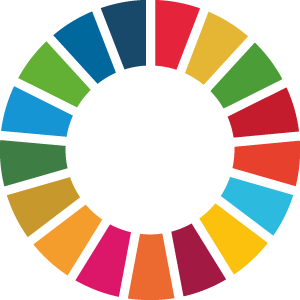
Related SDGs
Others
Learning Curve Toward Service
Veterinary student volunteers gain hands-on appreciation of rural life

